
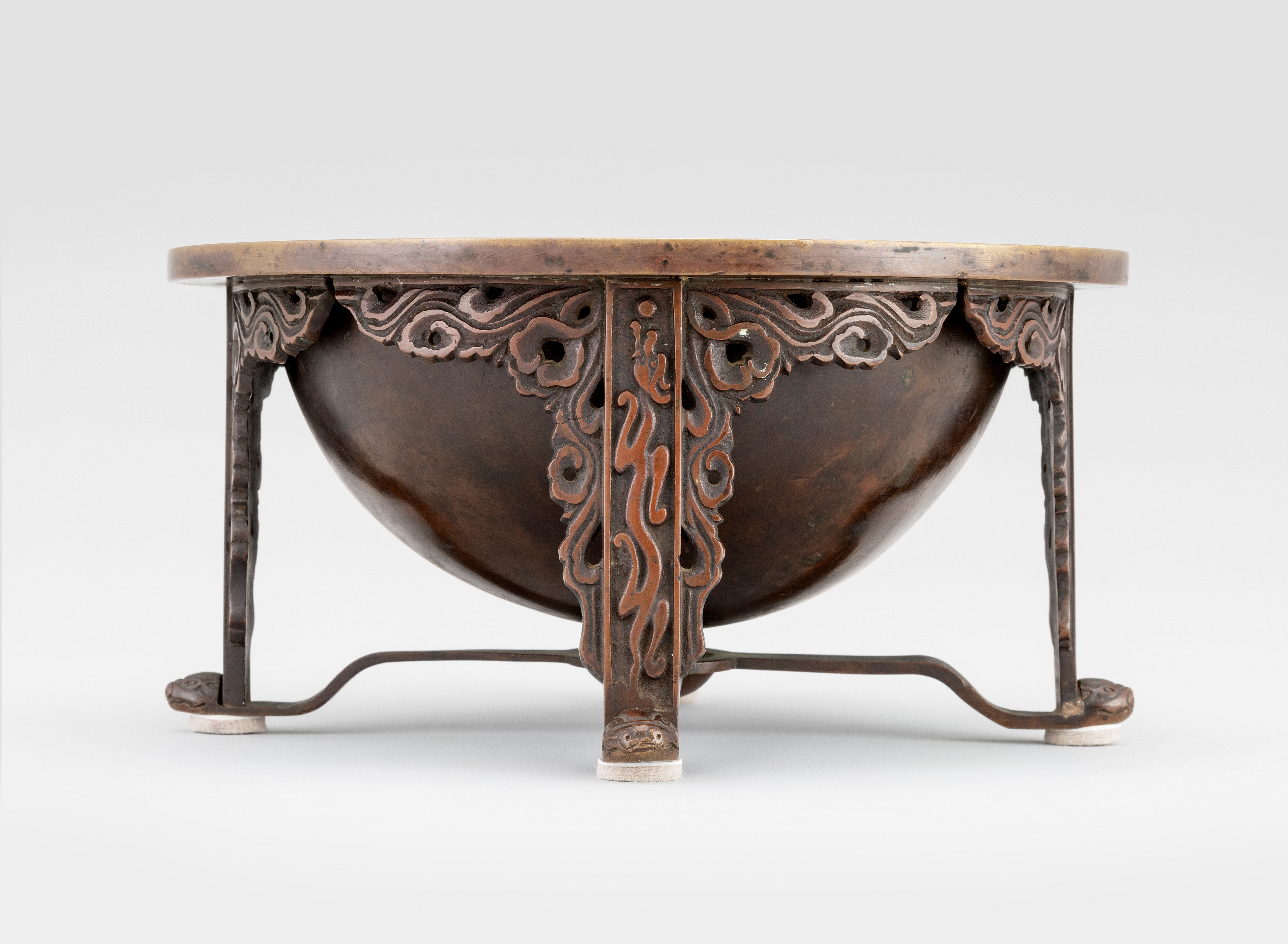
Bowl-shaped sundial of Joseon Dynasty returns home
Art/Culture 09:30 November 17, 2020
SEOUL, Nov. 17 (Yonhap) -- A cauldron-shaped sundial made during the 1392-1910 Joseon Dynasty has returned home from the United States, South Korea's state heritage foundation said Tuesday.
The Overseas Korean Cultural Heritage Foundation said it bought the sundial, one of the Angbuilgu public clocks, at a U.S. auction in June and brought it back to South Korea two months later.
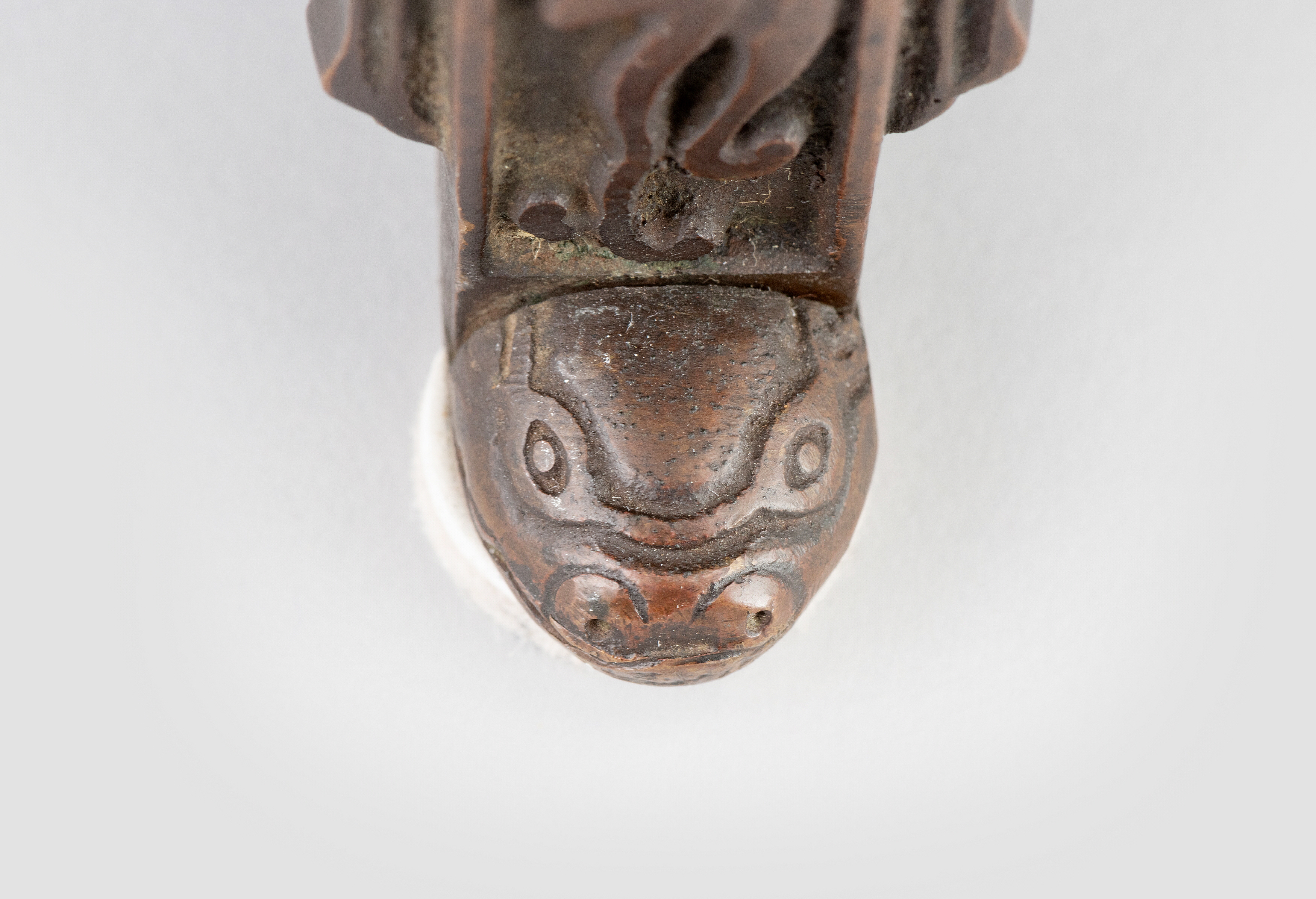

Anbuilgu was first invented during the reign of King Sejong in the 15th century in order to tell the 24 solar seasonal terms as well as the hours of the day, using lines and curves to indicate the time with a long thin rod in the middle.
It was installed at busy downtown points so that more people could check the time easily.
The foundation said the recently returned hemispherical clock, measuring 24.1 centimeters in width and 11.7 cm in height, is presumed to have been manufactured in the 18-19th century.

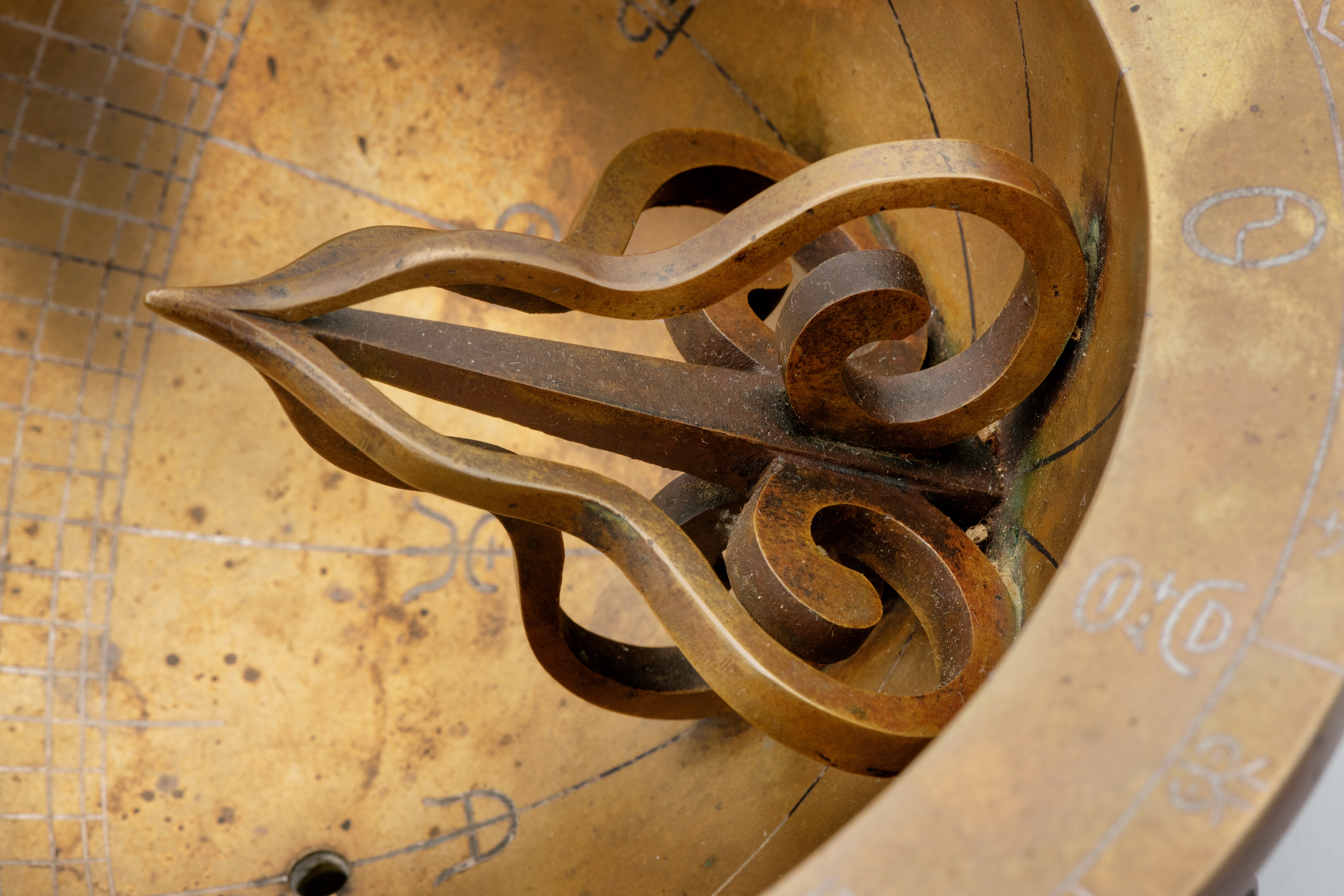
It is made of a copper alloy, elaborately decorated with refined silver inlay and dragon- and turtle-shaped legs.
There are seven Angbuilgu sundials in South Korea, while three are known to be in foreign countries like Japan.
"Angbuilgu sundials were the first public chronographs produced in Joseon, dating from the reign of King Sejong through the late Joseon period," the foundation said in a release.
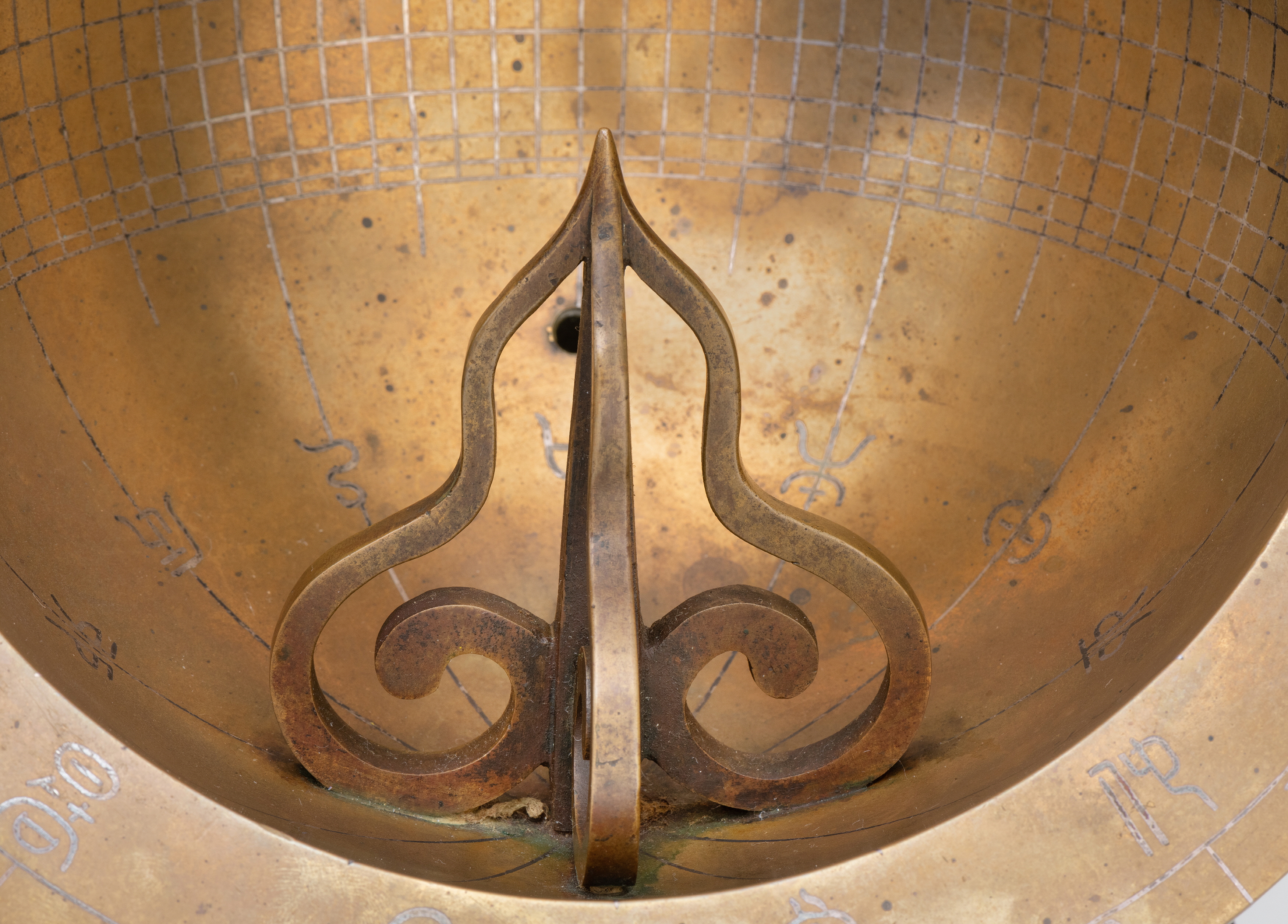

"The return of the Angbuilgu sundial is indeed meaningful as it has finally been returned to its home country and can again give the correct time," it noted.
The foundation said this Angbuilgu sundial will be displayed to the public starting from Wednesday to Dec. 20 at the National Palace Museum of Korea.
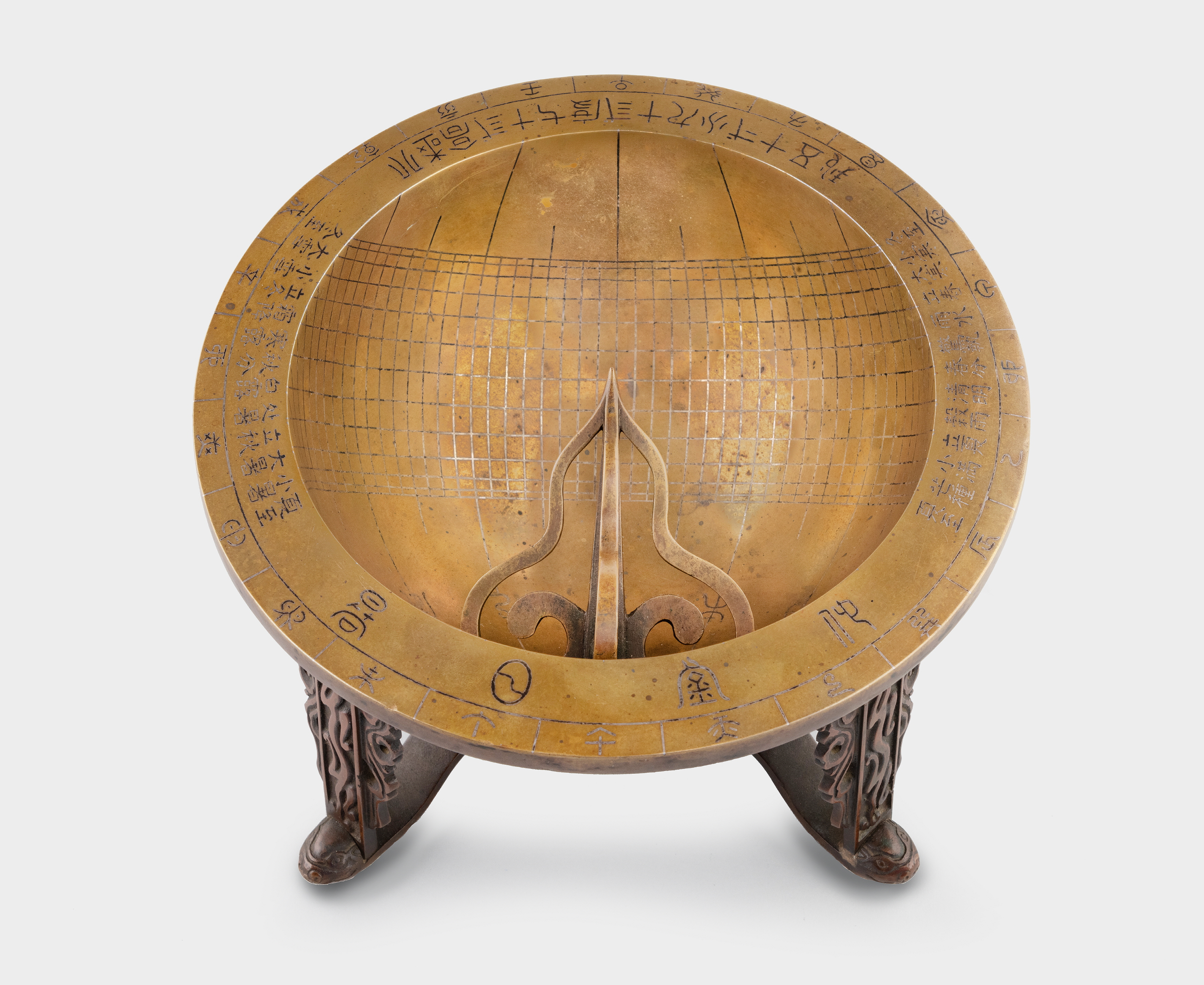

애민정신을 담은 조선 과학기술의 정수, ‘앙부일구’의 귀환
- 미국에서 돌아와 17일 언론 공개 후 18일부터 국립고궁박물관에서 일반 공개 -
문화재청(청장 정재숙)은 지난 상반기 미국의 한 경매에 출품된 조선 시대 해시계인 ‘앙부일구’(仰釜日晷)를 국외소재문화재재단(이사장 최응천)을 통해 지난 6월 매입해 17일 오후 2시 국립고궁박물관(관장 김동영)에서 공개한다.
문화재청은 지난 1월 이 유물에 대한 정보를 입수하였고 유물에 대한 면밀한 조사와 검토, 국내 소장 유물들과의 과학적 비교분석 등을 진행하였으며, 코로나19로 인해 3월부터 6월까지 수차례 경매가 취소되고 연기되는 우여곡절 끝에 지난 8월 마침내 국내로 들여오는 데 성공할 수 있었다.
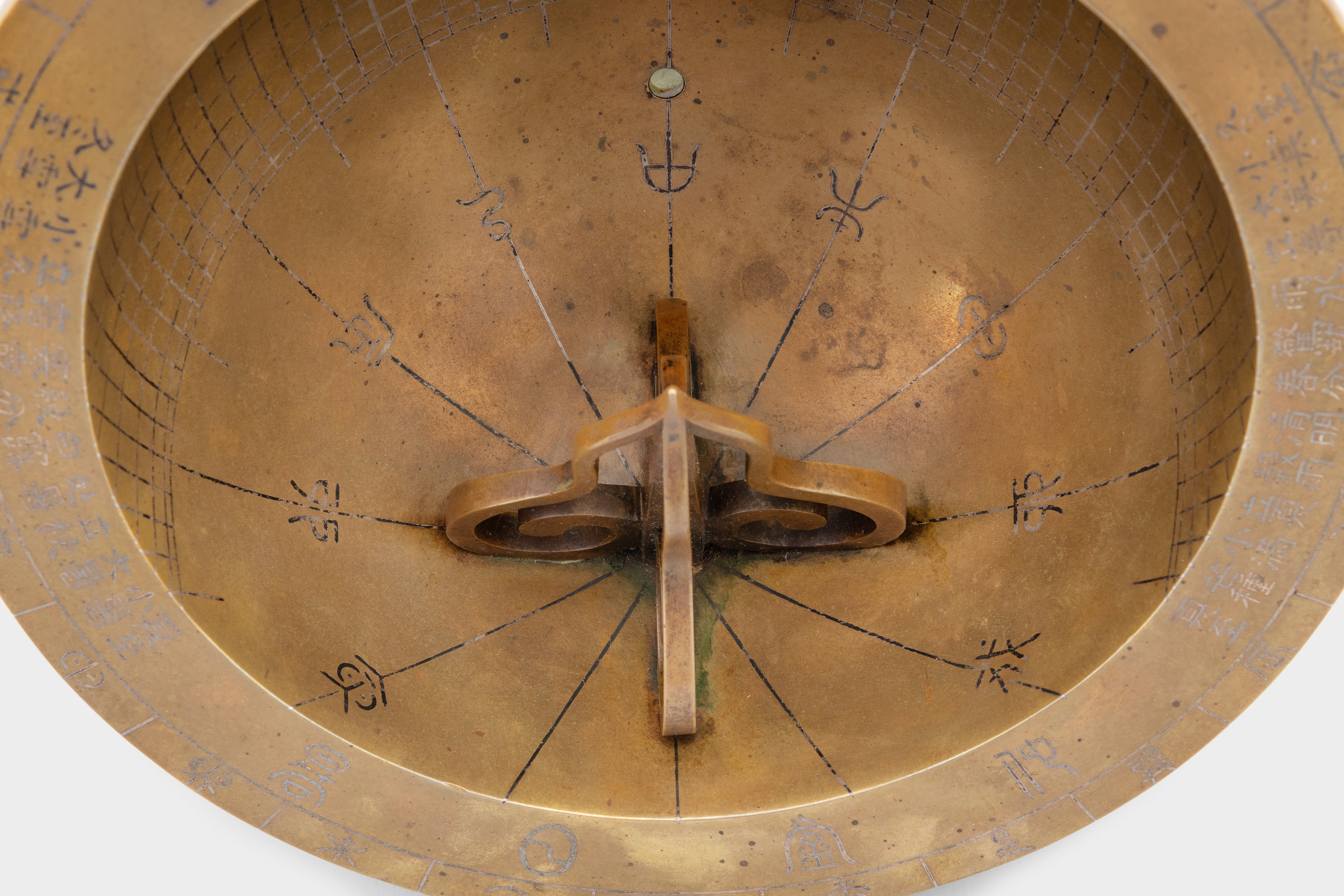

‘앙부일구’는 ‘하늘을 우러러 보는(仰, 앙) 가마솥(釜, 부) 모양에 비치는 해 그림자(日晷, 일구)로 때를 아는 시계‘ 라는 뜻으로, 조선 시대 과학 문화의 발전상과 통치자의 백성을 위하는 마음을 보여주는 대표적인 유물이다.
이번에 환수된 앙부일구는 18세기에서 19세기 초 사이에 제작된 것으로 추정되며, 지름 24.1㎝, 높이 11.7㎝, 약 4.5㎏의 무게를 지닌 금속제 유물이다. 정확한 시간과 계절을 측정할 수 있는 조선의 우수한 과학 수준을 보여주는 동시에, 정밀한 주조기법, 섬세한 은입사 기법, 다리의 용과 거북머리 등의 뛰어난 장식요소를 볼 때 고도로 숙련된 장인이 만든 높은 수준의 예술작품임을 알 수 있다.
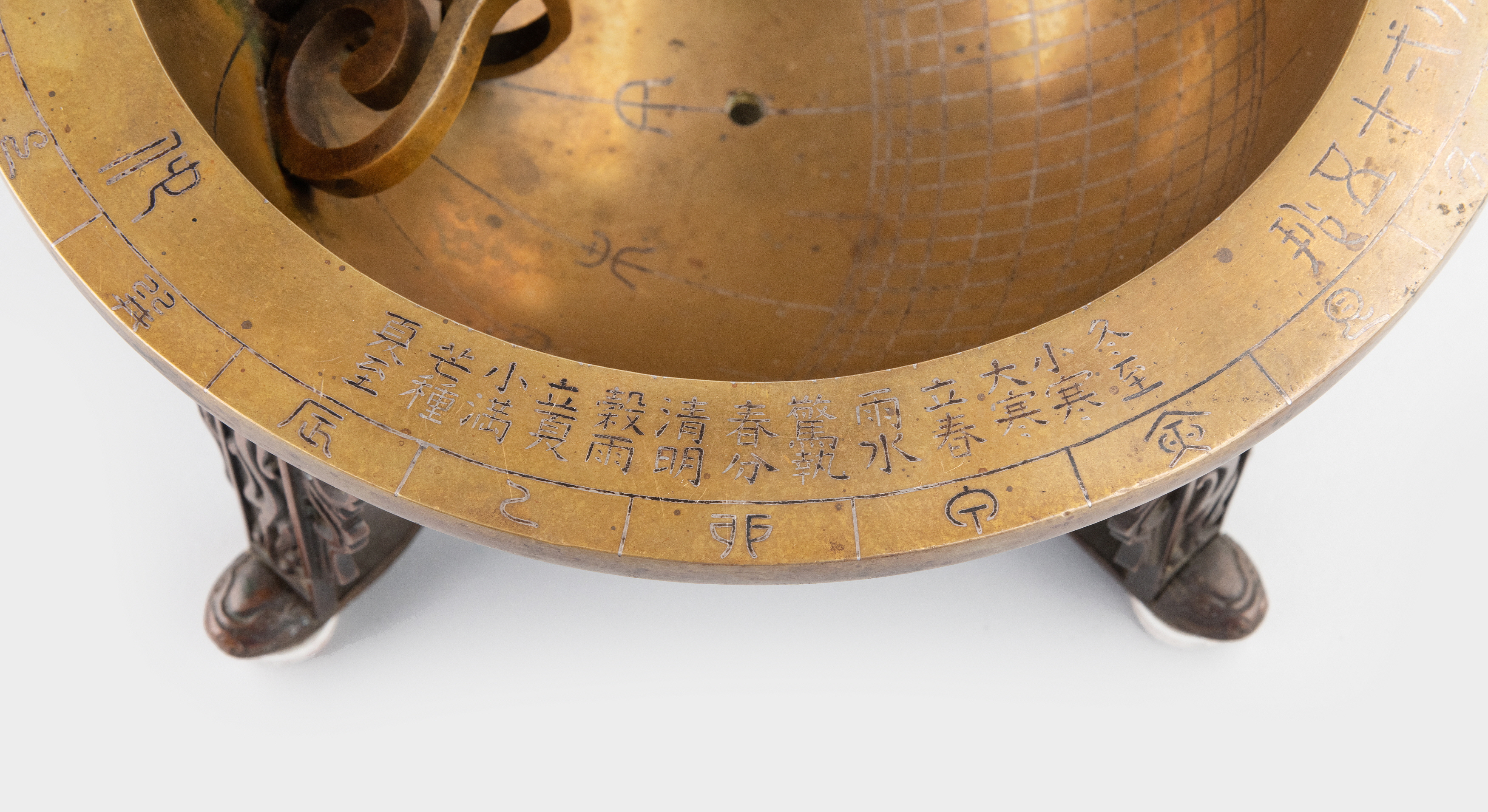

유교 국가에서 ‘관상수시(觀象授時, 하늘을 관찰하여 백성에게 절기와 시간을 알림)’는 왕의 가장 중요한 임무 중 하나였다. 앙부일구는 백성을 굽어 살피는 애민(愛民) 정신을 담아 만든 조선 최초의 공중(公衆) 시계로, 세종 대부터 조선 말까지 제작되었다. 세종대왕은 앙부일구를 처음으로 만들어 백성들이 시간을 읽을 수 있도록 종묘와 혜정교(惠政橋, 지금의 서울 종로1가)에 설치한 바 있었다.
현대 시각체계와 비교했을 때도 거의 오차가 나지 않으며, 절후(節候, 한 해를 스물넷으로 나눈 기후 표준점), 방위(方位), 일몰시간, 방향 등을 알 수 있는 체계적이고 정밀한 과학기기다.
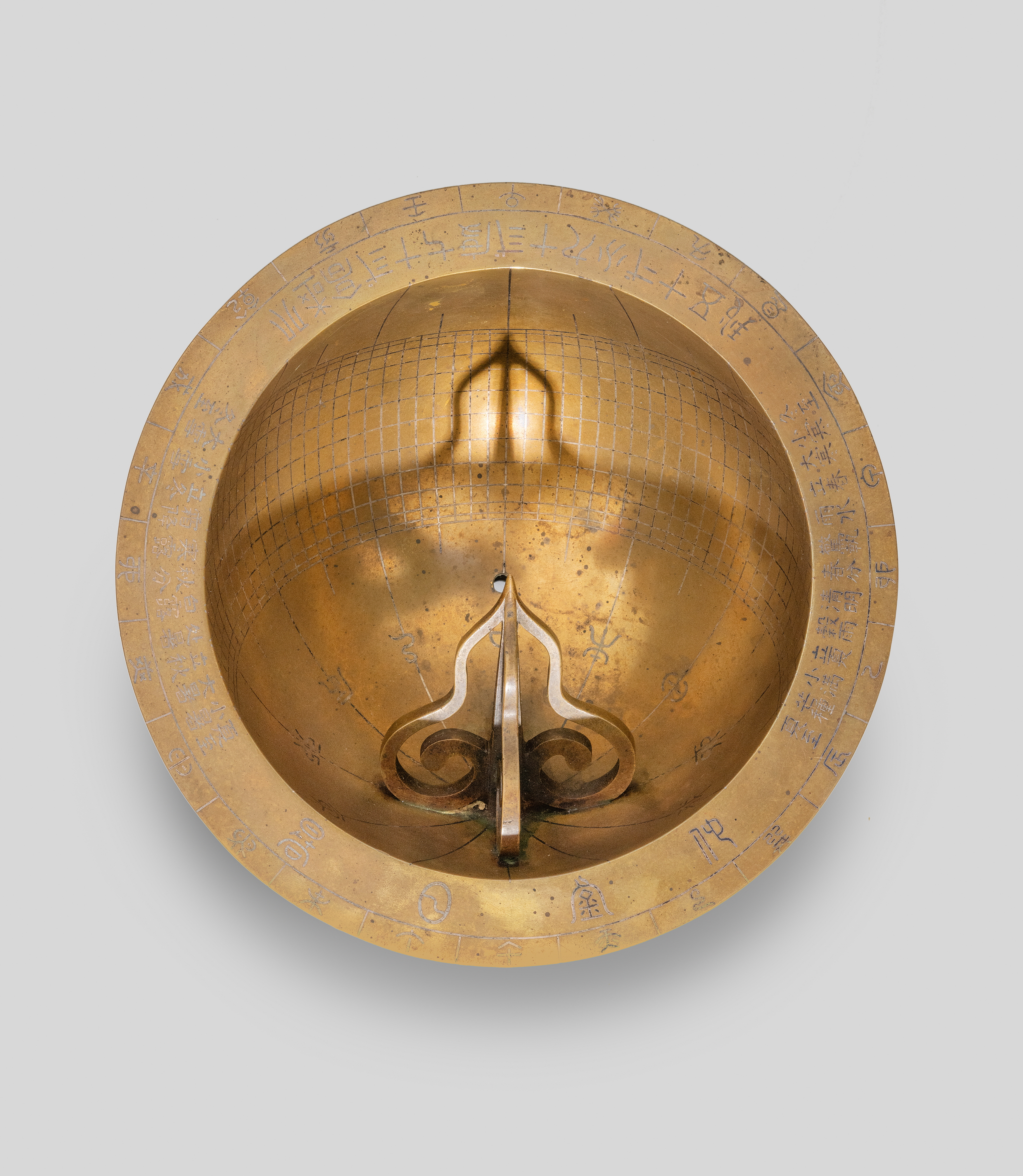

이러한 높은 가치에도 불구하고 조선시대 과학 기기류는 기록으로만 전하는 것이 많으며, 이와 유사한 크기와 재질의 앙부일구는 국내에 불과 7점만 전하고 있다.
환수된 앙부일구는 서울의 위도에서 정확한 시간을 읽을 수 있도록 제작되었다. 이제 고국의 하늘 아래로 돌아와 비로소 정확한 시간을 알릴 수 있게 되었다는 점에서 이번 환수가 가지는 의미는 더욱 뜻깊다.
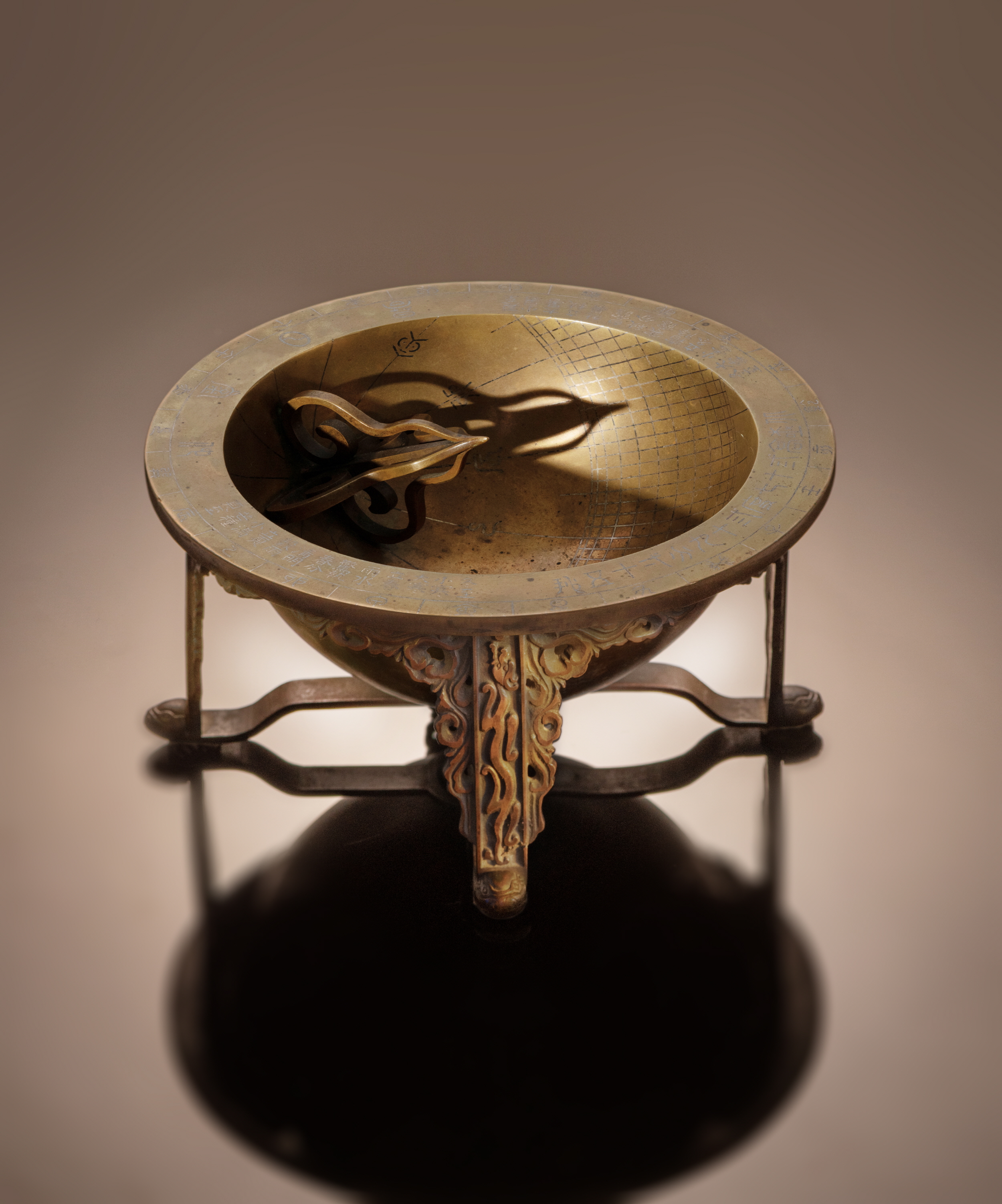
이번에 돌아온 앙부일구는 앞으로 국립고궁박물관에서 관리되며 자격루, 혼천의 등 기타 과학 문화재들과 함께 연구, 전시, 보고서 출판 등 다양한 분야에서 활용될 계획이다. 특히, 언론공개 다음 날인 18일(수)부터 12월 20일(일)까지 박물관 내 과학문화실에서 모든 국민에게 특별 공개할 예정이다.
문화재청은 코로나19로 인한 여러 어려움에도 불구하고 정부혁신과 적극행정의 하나로 성공적인 환수를 한 앙부일구를 동력으로 삼아 앞으로도 소중한 국외소재문화재 발굴과 환수에 최선을 다할 것이다.
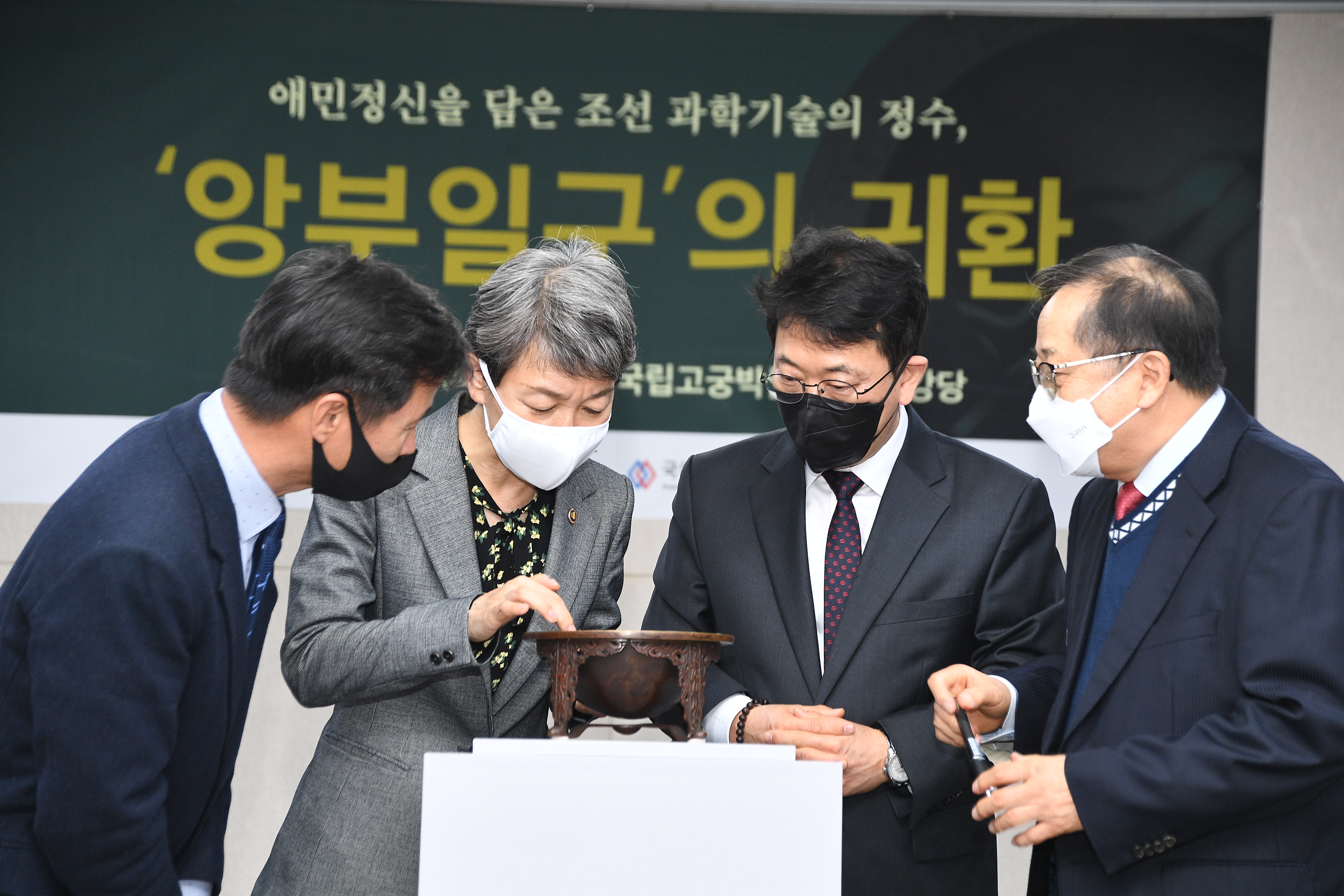
Return of an “Angbuilgu” Sundial,
the Epitome of Joseon Scientific Technology and Reflection of the King’s Love for the People
The Cultural Heritage Administration (Administrator Chung Jae-suk) will be making an Angbuilgu- a sundial from the Joseon Dynasty -available to the press at the National Palace Museum of Korea (Director Kim Dong-young) at 2 PM on November 17. This sundial went on auction in the United States and was purchased this past June by the Overseas Korean Cultural Heritage Foundation (Chairman Choi Eungchon).
Under the authority of the Cultural Heritage Administration, the Overseas Korean Cultural Heritage Foundation collected information about this sundial last January and conducted a close research and investigation of the item, including scientific analysis for comparison with other metal sundials housed in Korea. The scheduled auction of the sundial was postponed several times from March to June due to the COVID-19 pandemic, but it was finally brought home to Korea in August.
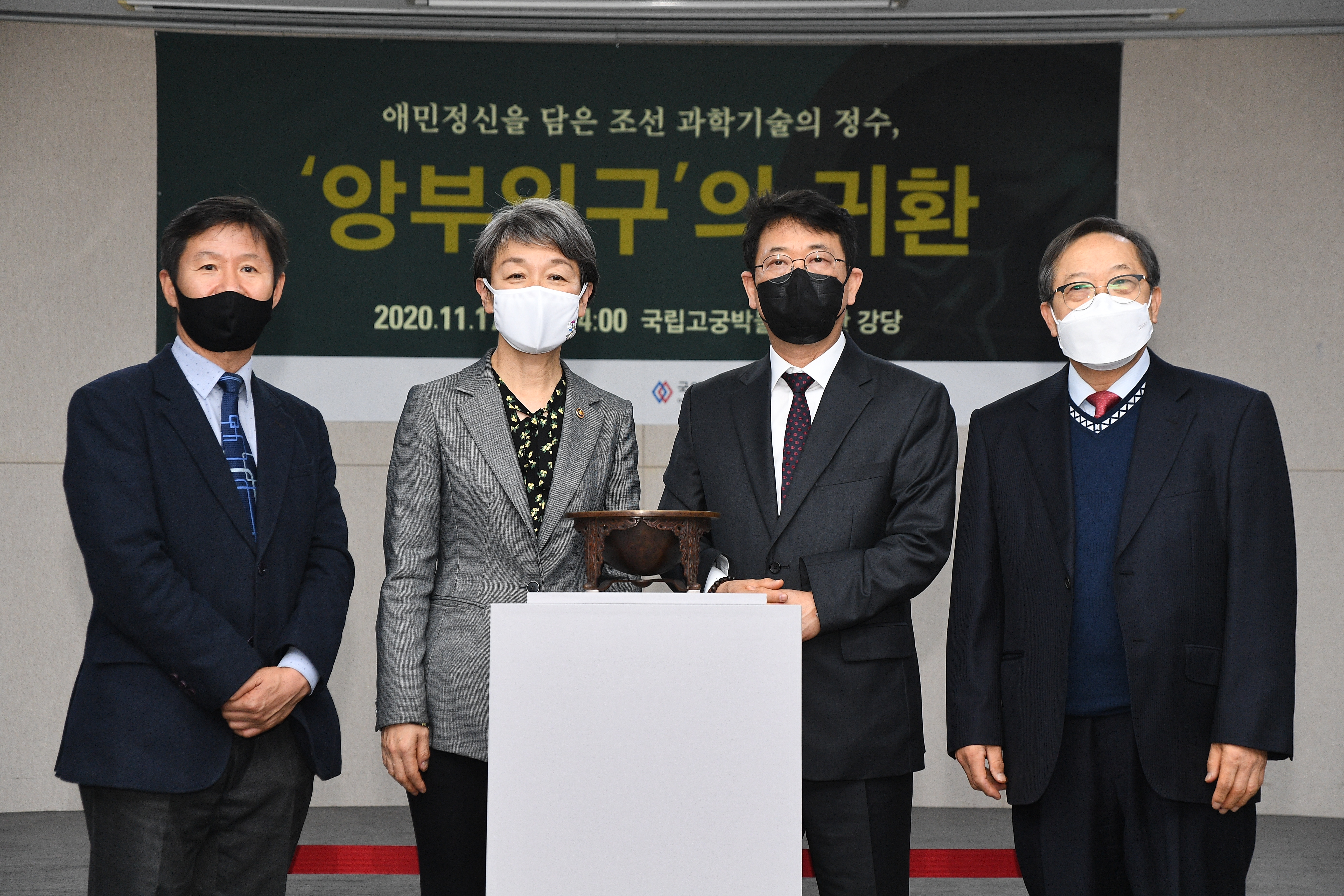
The classical Chinese characters comprising the term “Angbuilgu” respectively mean “looking up at the sun”(仰, ang), “cauldron”(釜, bu), “sun”(日, il), and “shadow”(晷, gu), which together indicate “a sundial that tells time by the shadow of the sun cast over its cauldron-shaped body.” Angbuilgu sundials testify to the advanced science of the Joseon period and are symbolic of the Joseon king’s love for the people.
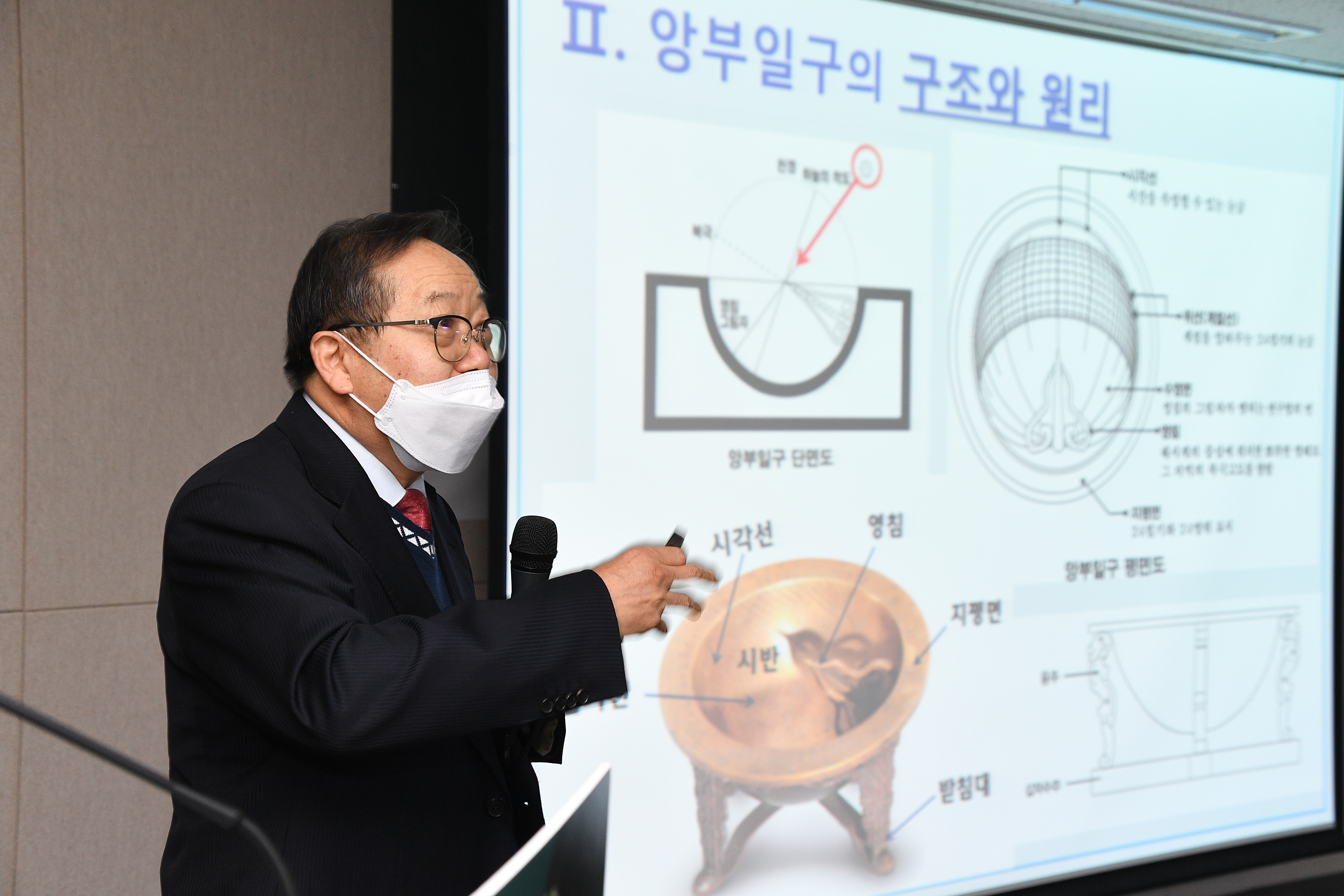
The returned Angbuilgu sundial is believed to have been produced between the eighteenth and early nineteenth century. It measures 24.1 centimeters in diameter and 11.7 centimeters in height and weighs around 4.5 kilograms. The use of elaborate metal casting methods, refined silver inlay decoration, dragon and turtle head designs on the legs, and other features attest to advanced level of science and artistry measuring seasons and time in Korea at the time, and render it a high-quality work of art produced by skilled artisans.
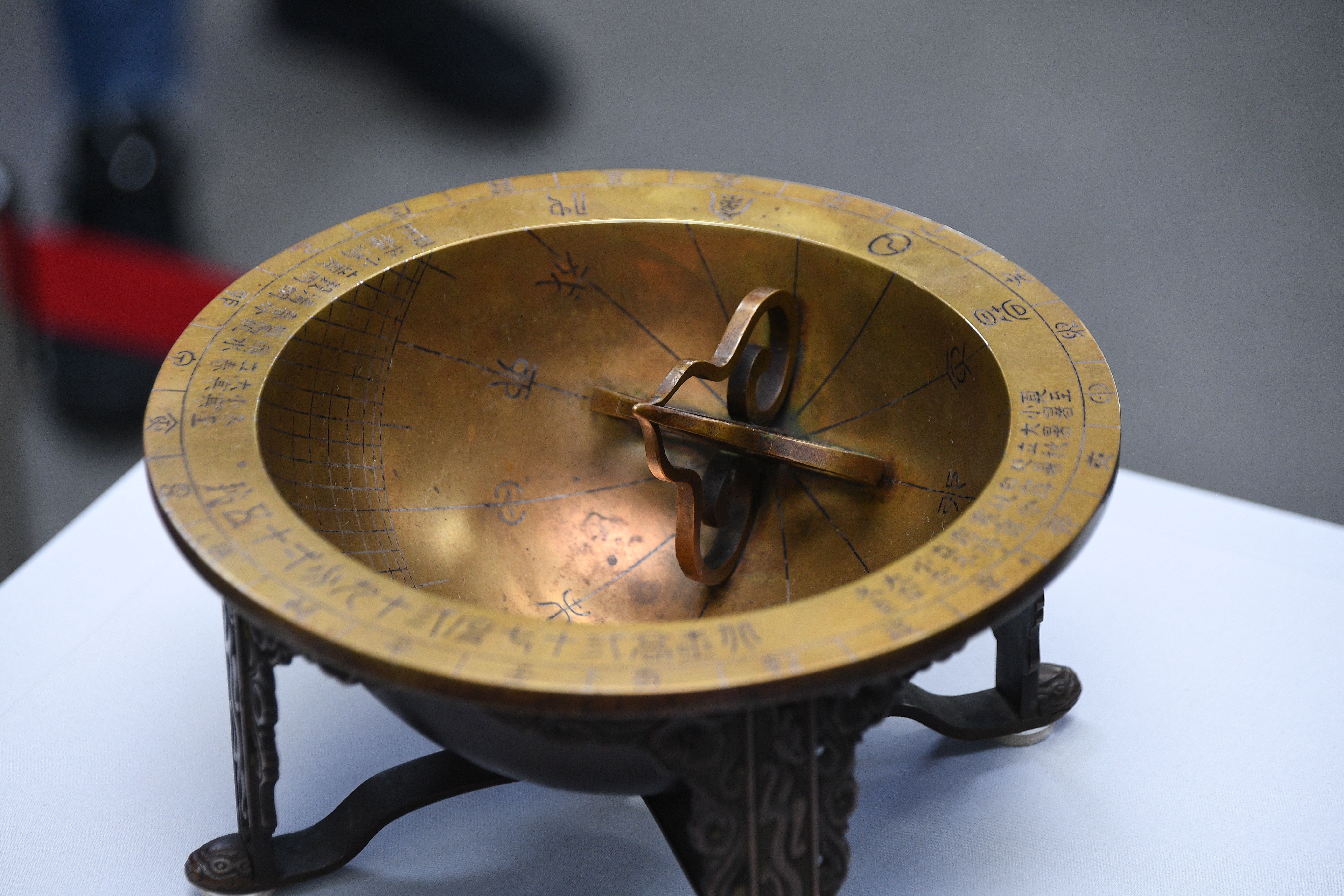
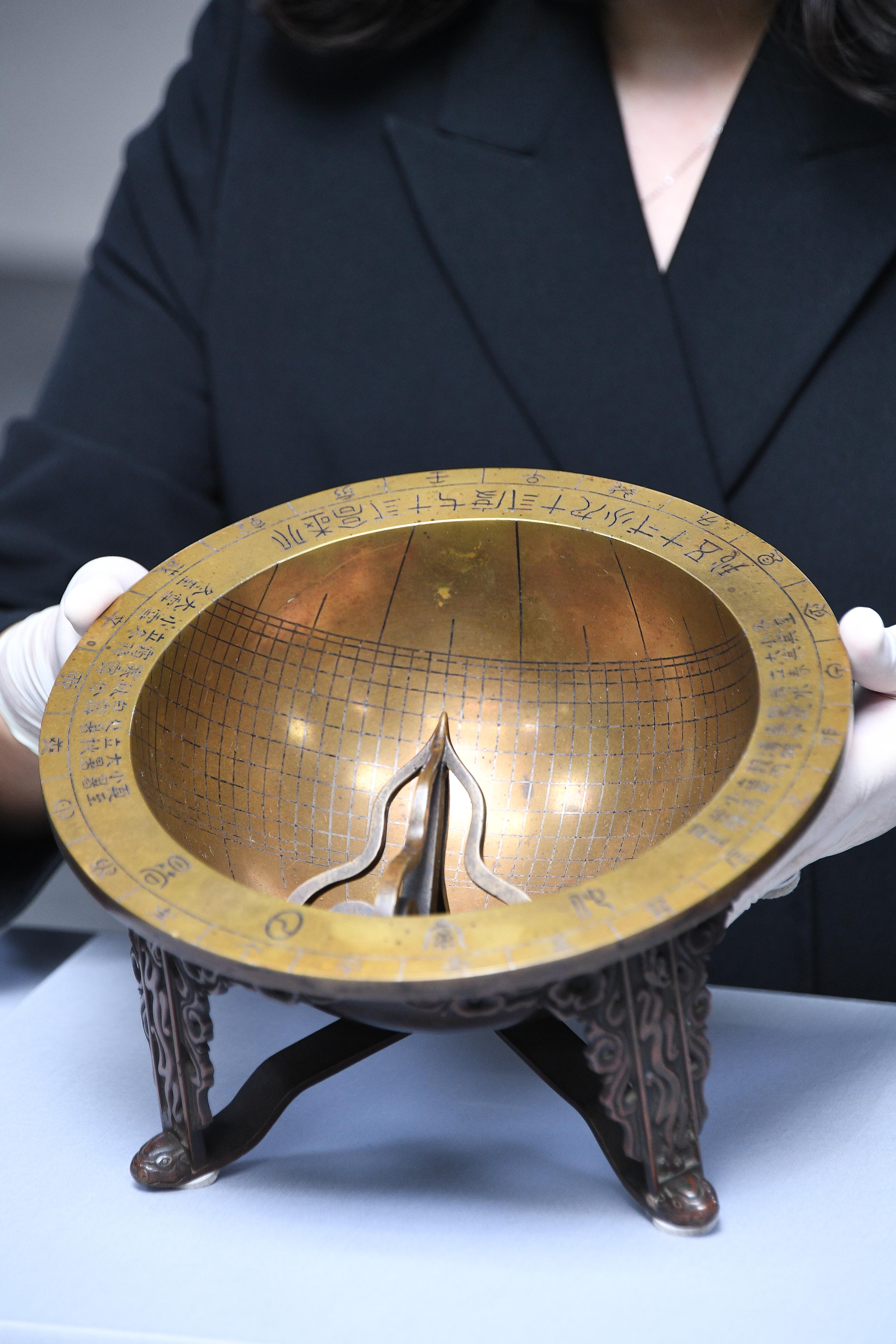

In ancient Confucian states, the king would observe the celestial bodies in order to inform the people of solar terms and the correct time. This was considered one of the most important royal duties, and Angbuilgu sundials were designed to serve this aim, thus reflecting the king’s love for the people. Angbuilgu sundials were the first public chronographs produced in Joseon, dating from the reign of King Sejong through the late Joseon period. King Sejong commissioned the first Angbuilgu sundials and ordered them mounted in front of the Jongmyo Ancestral Shrine and Hyejeonggyo Bridge (present-day Jongno 1-ga) so that people could know the time. Angbuilgu sundials make little time difference when compared with certain modern time standards. They are accurate and systematic scientific instruments that can inform users about the subdivisions of the seasons (a climatological standard based on 24 divisions of the year), bearings, sunset time, and directions.

Despite their high value, few scientific instruments from the Joseon period managed to be preserved and are known today only through historical records. Only seven of these large metal Angbuilgu sundials exist in Korea.
The retrieved Angbuilgu sundial only gives the correct time when it is calibrated for the latitude installed at Hanyang (Seoul). The return of the Angbuilgu sundial is indeed meaningful as it has finally been returned to its home country and can again give the correct time.
The National Place Museum of Korea will take care of the Angbuilgu sundial and utilize it along with other scientific cultural properties such as the Jagyeongnu water clock and Honcheonui armillary sphere for research, exhibition, publications, and other diverse purposes. This Angbuilgu sundial will be displayed to the public at a special exhibition held in the Science Culture Gallery of the museum starting Wednesday, November 18, the day following the press viewing.

Despite the many difficulties imposed by the COVID-19 pandemic, the Cultural Heritage Administration successfully retrieved this Angbuilgu sundial as part of its contributions to the Government Innovation and Active Administration campaigns. Spurred by this achievement, the Cultural Heritage Administration will continue to make sincere efforts to discover and retrieve precious Korean cultural heritage currently residing abroad.


국조역상고 권1 북극고도
『국조역상고』(1796)에 따르면, "숙종(肅宗) 39년(1713)에 청나라 사신 하국주(何國柱)가 상한대의(象限大儀)를 써서 한양(漢陽)의 종로에서 북극고도를 측정하여 37도 39분 15초의 값을 얻었다."는 내용이 있습니다.
國朝曆象考 卷一 北極高度
肅宗三十九年淸使何國柱用象限大儀高度于漢城鐘街得三十七度三十九分一十五秒
세종 16년 10월 2일 을사 4번째 기사 (<앙부일구> 최초 언급 기록)
처음으로 앙부일구(仰釜日晷)를 혜정교(惠政橋)와 종묘(宗廟) 앞에 설치하여 일영(日影)을 관측하였다. 집현전 직제학(直提學) 김돈(金墩)이 명(銘)을 짓기를,
"모든 시설(施設)에 시각보다 큰 것이 없는데, 밤에는 경루(更漏)가 있으나 낮에는 알기 어렵다. 구리로 부어서 그릇을 만들었으니 모양이 가마솥과 같고, 지름에는 둥근 톱니를 설치하였으니 자방(子方)과 오방(午方)이 상대하였다. 구멍이 꺾이는 데 따라서 도니 겨자씨를 점찍은 듯하고, 도수(度數)를 안에 그었으니 주천(周天)의 반이요, 신(神)의 몸을 그렸으니 어리석은 백성을 위한 것이요, 각(刻)과 분(分)이 소소(昭昭)하니 해에 비쳐 밝은 것이요, 길 옆에 설치한 것은 보는 사람이 모이기 때문이다. 지금부터 시작하여 백성들이 만들 줄을 알 것이다." 하였다.
○初置仰釜日晷於惠政橋與宗廟前, 以測日影。 集賢殿直提學金墩爲銘曰:
凡所設施, 莫大時也。 夜有更漏, 晝難知也。 鑄銅爲器, 形似釜也。 經設圓距, 子對午也。 竅隨拗回, 點芥然也。 畫度於內, 半周天也。 圖畫神身, 爲愚氓也。 刻分昭昭, 透日明也。 置于路傍, 觀者聚也。 自今伊始, 民知作也。
|
참고 |
|
<앙부일구> 국내외 소장 현황 |
|
도판 |
소장처 |
제작연대 |
재질 |
크기(㎝) |
제작자 |
비고 (출전*) |
|
|
국립고궁박물관 |
1713년 이후 |
동합금에 은입사 |
전체높이 11.9 바깥지름 24.3 |
- |
2020년 미국에서 매입 |
|
|
국립고궁박물관 |
1654년 이후~1713년 이전 |
동합금에 은입사 |
전체높이 17.9 지름 35.1 |
- |
보물제845호 (국립고궁박물관 제공) |
|
|
국립고궁박물관 |
1899 |
동합금에 은입사 |
전체높이 18.8 지름 24.1 |
강건(姜湕) |
보물제845-2호 (국립고궁박물관 제공) |
|
|
국립고궁박물관 |
1899 |
동합금에 은입사 |
전체높이 11.7 지름 24.3 |
강건(姜湕) |
(국립고궁박물관 제공) |
|
|
성신여자대학교박물관 |
1713년 이후 |
동합금에 은입사 |
전체높이 12.2 지름 24.3 |
- |
(성신여자대학교박물관 제공) |
|
|
국립경주박물관 |
1713년 이후 (19세기 추정) |
동합금에 은입사 |
전체높이 11.5 지름 24.2 |
- |
(국립경주박물관 제공) |
|
|
고려대학교박물관 |
1713년 이후 |
동합금에 은입사 |
전체높이 10.0 지름 24.8 |
- |
다리 결실 (고려대학교박물관 제공) |
|
|
국립민속박물관 |
1713년 이후 |
동합금 |
전체높이 11.2 지름 24.2 |
- |
다리 3개 (국립민속박물관 제공) |
|
|
영국 옥스퍼드 과학사박물관 |
1880 |
동합금에 은입사 |
높이 11.7 지름 28.8 |
강윤(姜潤) |
다리 결실(Minh Chung, 2011) |
|
|
일본 세이코박물관 |
17~18세기 |
동합금에 은입사 (추정) |
미상 |
- |
(세이코박물관 제공) |
|
|
일본 국립과학박물관 |
18세기 경 |
동합금에 은입사 |
미상 |
- |
(국립과학박물관 제공) |
* 동제 은입사 앙부일구 현황으로, 기타 재질(대리석, 도제)의 앙부일구 및 소형, 휴대용 앙부일구 등은 목록에서 제외함
* 각 앙부일구의 도판 및 크기 등 세부내용은 각 소장기관 및 아래 참고문헌에서 전재하였으며, 이미지 저작권은 각 소장기관에 있음
ㅇ『천문-하늘의 이치・땅의 이상』(국립민속박물관, 2004)
ㅇ『조선시대 해시계와 앙부일구』(세종대왕역사문화관, 2020)
ㅇ Minh Chung, Korean Treasures: Rare Books, Manuscripts and Artefacts in the Bodleian Libraries and Museums of Oxford University (Bodleian Library, University of Oxford, 2011)
□ <앙부일구(仰釜日晷)> 유물 설명
|
○크 기: 전체높이 11.9㎝, 바깥지름 24.3㎝, 무게 4.49㎏ ○재 질: 동합금에 은입사 ○시 대: 조선 1713년 이후 ○환수일자: ’20. 8. 24.(월) ○환수방식: 미국 경매 매입 |
|
○ 특이사항
- 조선의 천문과학기술을 반영하여 창제한 해시계로서 모든 백성이 조선 고유의 시간과 절기를 알 수 있게 한 세종의 애민정신이 깃든 정밀한 과학문화재이자, (붙임1 참조)
- 숙련된 장인에 의해 구사된 시각선과 계절선, 24절기의 정교한 은입사 기법, 다리의 구름과 용 문양 조각에서 예술성까지 가미된 최상급의 앙부일구라고 판단됨
- 지평환(地平環)에 새겨진 한양의 위도 ‘북극고 37도 39분 15초(北極高三十七度三十九分一十五秒)’는 이 앙부일구가 1713년(숙종 39)* 이후 제작되었음을 의미함 (붙임2 참조)
○환수가치
- 조선시대 과학문화재는 실물자료가 희소하여, 유사한 크기와 재질의 앙부일구는 국내에 단 7점만이 전하고 있으므로 환수 시 연구․활용 가치가 높음
○소장(예정)기관: 국립고궁박물관
'NEWS & THESIS' 카테고리의 다른 글
| 이례적으로 자세한 인삼문화 무형문화재 지정 사유 (0) | 2020.11.21 |
|---|---|
| 한국산성은 연못 바람, 양주 대모산성도 합세 (1) | 2020.11.18 |
| 남원 아막성에서 찾은 신라 저수지 (0) | 2020.11.17 |
| 용인 보정동고분 발굴현장 (0) | 2020.11.17 |
| 용인 보정동서 미니어처 신라왕릉 (1) | 2020.11.17 |




댓글